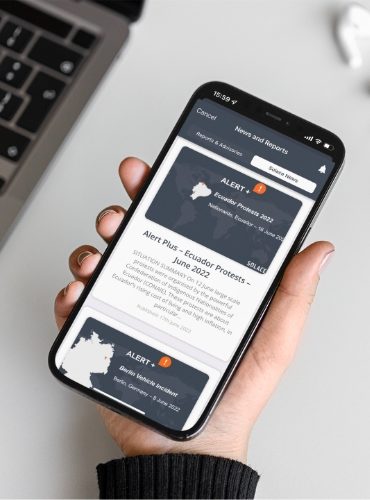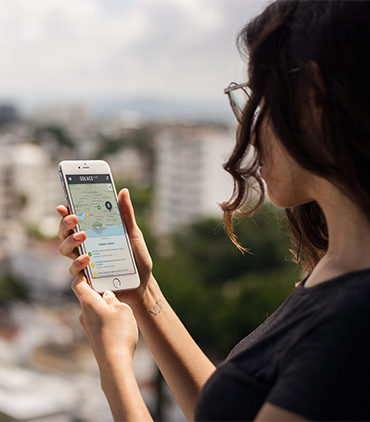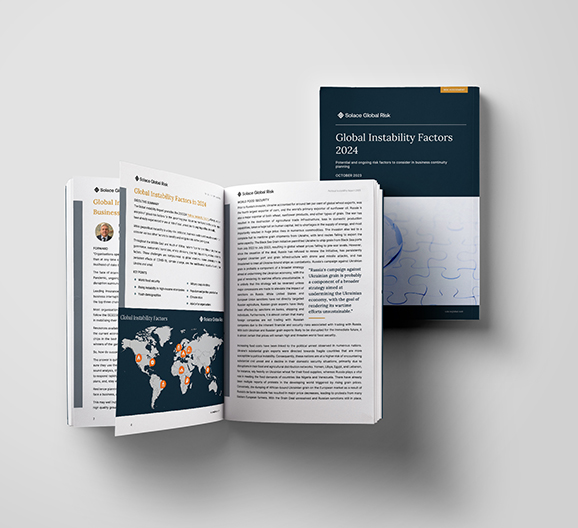The Milk Tea Alliance

14 Jul 2021
The Milk Tea Alliance is a loose network and coalition of protestors, activists and youngsters from across Asia. Placards bearing pictures and slogans associated with the “alliance” have been appearing across the region in the past year. It is a broad and leaderless alliance, which can to some degree be anything anyone wants it to be. At its core however are two central values which for those in Taiwan and Hong Kong are inseparable, pro-democratic and anti-Beijing.
Executive Summary
The Milk Tea Alliance is a loose network and coalition of protestors, activists and youngsters from across Asia. Placards bearing pictures and slogans associated with the “alliance” have been appearing across the region in the past year. It is a broad and leaderless alliance, which can to some degree be anything anyone wants it to be. At its core however are two central values which for those in Taiwan and Hong Kong are inseparable, pro-democratic and anti-Beijing.
Initially beginning life as an internet meme, the movement has spread via the web and not the streets. Originally, it was seen as a response to increasing Chinese nationalism in the region both on and offline. Since then, activists across the region, including Taiwan, Thailand, India, Hong Kong, and more recently Myanmar, have also used the imagery and slogans associated with it as part of their ongoing protest movements. As a result, the movement has gained a reputation as a broader pro-democratic, anti-authoritarian movement.
The name derives from the fact that the original three “founding” countries of the “alliance”, Thailand, Taiwan and Hong Kong share a common drink, Milk Tea. By contrast, the drinking of milk tea is not common in China, the main target of the alliance. As a result, the beverage became a symbol of anti-Chinese or pro-democratic solidarity. In the past year, this online movement has spread offline and has become a multi-national and leaderless protest movement across the region. Those aligned with it all share a common goal in the establishment of, or the strengthening of, democracy. Often, they are also advocating for push back against an increasingly confrontational China.
Digital Beginnings
The Milk Tea Alliance originated on Twitter during the 2019-20 Hong Kong protests. Thai actor, Vachirawit Chivaaree, who is widely popular in China, reposted an image on Twitter referencing Hong Kong as a country. Despite an apology following an overwhelmingly negative reaction by Chinese internet users, Chinese internet trolls, mainly a combination of the “Little Pinks” and the “50 Cent Party” found a similar image by Chivaaree’s partner regarding Taiwan’s sovereignty, which sparked more controversy.
The Chinese trolls, whose main job is to manipulate public opinion on the internet and help spread pro-Chinese nationalist rhetoric, carried out a sustained campaign of online criticism of the actor. This led to internet users from Taiwan and Hong Kong coming to the defence of the Thai actor. This online battle coincided with, and was likely fed by, the ongoing unrest in Hong Kong and concerns over Beijing’s intentions in Taiwan. In turn, this led to the creation of the Milk Tea Alliance meme. In the words of one activist, “an organic alliance – Thailand, Hong Kong, Taiwan – was born”.
The birth of this meme can be seen as a moment of digital solidarity against Chinese internet trolls and China’s regional aggression. As the online alliance grew, internet users from other countries joined in. Filipinos, for instance, used the hashtags created by the alliance to attack China over attempts to claim oceanic territories, which much of the world recognise as part of the Philippines.
A Youth Led Movement
The younger generation, especially in Hong Kong, Taiwan and Thailand have spearheaded this alliance. There are two main reasons for this. Firstly, they have grown up with the internet, thus they are considered “digital natives”. In 2018, Thailand was the world leader for time per day per person spent on the internet, at over nine hours. Hong Kong residents spend around seven hours on the internet. The city is also renowned for having one of the world’s highest internet penetration rates in the world at 92%. The average Taiwanese spends over eight hours a day on the internet, and the nation’s penetration rate is also 90%.
Secondly, the political capital of the younger generations in these three countries is often weak given their lack of wealth and political connections. Allying online allows them to circumvent their lack of wealth, and forge political connections and support with likeminded activists across the region. In doing so, these groups have gained influence, and have also created one of the world’s first geopolitical internet based political movements.
This occurred as all three countries were facing tense domestic and political situations. The Milk Tea Alliance connected pro-democracy protestors and activists, allowing them to share tactics and methods. Whilst this had occurred before between Hong Kong and Taiwan, the intensity and formalisation were new, as was the inclusion of Thailand. With their internet use and penetration all high, it should not be a surprise that what started as an online meme began to filter out onto the streets of Bangkok, Taipei and Hong Kong, with the online movement gaining offline momentum.
Offline Impact
The first signs that this movement had transcended its offline beginnings occurred in August 2020, as new pro-democracy protests erupted in Thailand. Within days it was spotted that the demonstrators in Thailand were emulating tactics and symbols practiced and developed in Hong Kong. Signs and symbols from the Thailand’s last round of large-scale protests in 2014, such as the three-fingered salute, also made a return. At this point, the protests in Hong Kong had been ongoing for over 18 months, and protestors had developed a set of unique tactics in the face of a robust security presence, some of which had evolved from the unrest during the city’s 2014 Umbrella Revolution.
These tactics are diverse and cover all aspects of protests including the organisation of them. For instance, the wearing of masks and yellow helmets have become common. This was for personal safety and to prevent against tear gas use and facial recognition. The use of Apple Air Drop, and Android Nearby Share was developed for the rapid sharing of information to as many people as possible in a small locality. Other tactics include the idea of protestors “being like water” and flowing from place to place to cause disruption whilst minimising chances of being arrested. Finally, in an attempt to make it harder for the protests to be effectively disrupted, they were all leaderless.
When Thai protestors were asked about this emulation, they responded that their pro-democratic counterparts in Hong Kong had shared information with them. If it had not been formally shared, Thai activists had picked up the techniques from social media discussion and footage under hashtags relating to the Milk Tea Alliance. As the Thai protests of August 2020 grew, spokespersons from the Thai and Hong Kong protests movements offered statements of support to each other. These groups started using slogans and protest signs to show support to their counterparts abroad.
Furthermore, Hong Kong, Taipei and Bangkok, all hosted demonstrations in support of the other’s protests. In Taiwan, groups such as the Taiwan Alliance for Thai Democracy organised demonstrations in support of protestors in Thailand. They also used crowd funding methods to raise money to send to the protest movement. This money was to be spent on equipment and legal fees. What started as an online meme in response to nationalist Chinese trolls, was morphing into a leaderless movement that was beginning to be seen on the streets of Bangkok, Hong Kong, and Taipei.
Myanmar Joins the Club
On the 1 February 2021, the Tatmadaw, the official name for the Myanmar military who seized power in a coup, they arrested civilian leaders including the head of government, and pro-democracy figure head, Aung Saun Suu Kyi. Within less than 24 hours, the first signs of pro-democracy protests had begun.
Almost immediately, the first Milk Tea Alliance hashtags relating to Myanmar were being shared. These hashtags allowed the Burmese to access manuals from Hong Kong on protest tactics. These were swiftly translated into Burmese and disseminated. At the protests, hand signals and gestures developed in Hong Kong and Bangkok were seen with regularity. The Burmese also adopted what was quickly becoming the main uniform for protestors in the region: yellow helmets, umbrellas and gas masks.
Activists in Thailand and Hong Kong saw the scenes from Myanmar and soon were organising solidarity protests. They also engaged with the Burmese on social media, while helping to spread awareness of their protests across the region and wider world. As a result of the country’s coup the Myanmar pro-democracy movement became a central member of the Milk Tea Alliance alongside the three “founding” countries.
This allowed the Burmese youth to connect with a wider protest movement. Many in the country had come of age in Myanmar’s relative openness of the mid-2000s. This gave them a taste of some democratic freedoms, as well as, crucially, allowing them to watch the protests in Hong Kong and Thailand. This ability to connect with like-minded activists in the region, via the Milk Tea Alliance, helped drive the large-scale pro-democracy protests.
Non-Core Members
By early 2021, the “core” grouping of the Milk Tea Alliance had solidified around Hong Kong, Taiwan, Thailand and Myanmar. However, since its emergence as an online meme, a number of other countries, and indeed some of their senior government officials, have used the name, images and slogans associated with the alliance.
Australia for instance has occasionally been cited as a member. This is driven largely by Canberra’s ongoing disputes with China on a number of issues. For instance, Australia has refused to back down from its demands of an independent investigation into the COVID-19 pandemic. It is also embroiled in a trade war with Beijing due to concerns with economic dumping.
Similarly, India, has also been included by some as a member of the informal alliance. The country has a fraught relationship with China and the recent disputes have seen some include New Delhi as a member of the alliance. Indeed, during the border clashes between China and India in 2020 the spokesperson from India’s ruling Bharatiya Janata Party (BJP) used the Milk Tea Alliance Hashtag. Furthermore, the Indian government, in a show of solidarity with Taiwan, put up posters celebrating Taiwan’s national day. This was in opposition to a request from the Chinese Embassy in New Delhi. India’s status as the world’s largest democracy, plus its growing wariness towards China, in particular after the 2020 border skirmishes, is why it is sometimes seen as being a member of the Milk Tea Alliance.
How the Milk Tea Alliance continues to develop will be key to whether over time these two non-core members of the alliance become to be seen as core members. If the alliance continues to be seen as broadly a pro-democracy movement in countries where democracy is struggling, then India and Australia, who both have functioning democracies, may continue to be seen as peripheral members. The inclusion of these two on the basis of their democratic credentials could, however, act to lend legitimacy to the democratic ideals in the other member countries, and the countries could act as an “ideal” for other Milk Tea Members to aspire to.
However, if the grouping continues to develop in its anti-Chinese sentiments, then these and other countries in the region that share concerns over Beijing’s influence could slowly gravitate towards the grouping. An increasingly assertive and powerful China represents both a threat to the established regional order and also to the ideals of democracy in the region. Thus, the Milk Tea Alliance could function as both a grouping which combines pro-democratic sentiments with anti-Chinese wariness.
Looking Ahead
It should not be a surprise that what started as a regional online trend has slowly morphed into what seems to be cohesive pan-regional movement advocating for change. The region’s youth have been born into a world with smartphones, social networks, encrypted messages, instant messaging and sharing. At the same time, they were becoming politically aware of the problems they, and others like them, face across the region.
The formation of this movement also points to something else. Namely, that China is still unsuccessful in cultivating soft power across the region or winning the hearts and minds of their Taiwan and Hong Kong “compatriots” and those in neighbouring countries. The alliance also helps to highlight to the world the fact that several Asian countries are struggling with issues such as authoritarianism and autocracy. The forging of pro-democratic networks helps to show these are not isolated challenges in a region which historically is infamous for weak and shaky democracies. The Milk Tea Alliance shows there is public appetite for democracy in the region.
At the time of writing, it is more akin to a slogan or a catchphrase for people who share these sentiments of opposition to authoritarianism and hopes for democratic self-determination. No grouping, person, organisation, or country can lay claim to “owning” or “organising” the alliance due to its leaderless nature. The Milk Tea Alliance includes anyone who shares these ideals and the unifying symbols, slogans and hashtags are actually what the protests are rallying around and using as their “figure head”.
In this sense the Milk Tea Alliance is similar to how BlackLivesMatter once was. Recent years have seen this latter movement begin to institutionalise and organise structured chapters and associations. It remains to be seen whether a similar evolution will take place within the Milk Tea Alliance. If it does, there may be further repercussions for China in the region. Organised groups are able to lobby governments and often have greater political clout than decentralised ones. Regional governments could justify anti-Chinese sentiment or suspicion on the basis of organised widespread popular opinion.
In a nod to the impact that the Milk Tea Alliance has had, and to its digital birth in April 2021, Twitter gave the alliance hashtag its own emoji. They said that this was to commemorate the first anniversary of the pro-democracy activism which grew around the Milk Tea Alliance hashtag. Twitter also stated that in the 12 months since the hashtag first appeared, over 11 million tweets had been tagged with it. The digital birth of the alliance also shows how activists can reclaim the utopian ideal of the internet. It was widely and optimistically thought that social networks and increased technology would help democratic movements. However, recent years have seen social networks and technology be used smartly be autocratic governments to watch and control citizens. The Milk Tea Alliance hashtag and movement helps to show how people can push back against this, and how it can be sustained through digital engagement and networks.
Whilst many of the strengths of the Milk Tea Alliance lie in its broad and leaderless nature, these are also perhaps its greatest weakness. Whilst India has sometimes been referred to as being a potential member of the Milk Tea Alliance, the hashtag and symbolism was used by many nationalist Indians when Indian and Chinese soldiers clashed at the border in the Himalayas. Some of these nationalists support the current Indian government, which has faced accusations of undermining the country’s democratic freedoms, undermining the democratic side of the movement.
In the other direction, should the alliance harden into being solely anti-Chinese in nature, then it faces overlap with the US backed grouping known as the “Quad”, which is becoming seen as an anti-China grouping in the region. These questions are at the heart of what the Milk Tea Alliance is, and what it supports to a certain degree only mirrors the realities of the region, where economic, diplomatic, trade and political ties are often clouded and overshadowed by the rising power of Beijing.
Taiwan, the regional “beacon” of democracy has to tread carefully to avoid outright anger from its autocratic neighbour, whilst Hong Kong has seen its pro-democracy movement crushed and slowly gutted by Beijing. There has been the coup in Myanmar against the newly elected government. Thai politics is notoriously unstable and has the controversial harsh “lese majeste” laws that criminalize defamation of the king. All of these raise genuine questions as to what change, other than protests under a catchy slogan, the Milk Tea Alliance may be able to generate.
Against this backdrop the movement can be seen as a “common struggle” which allows for the raising and forming of a common consciousness, and the slow building of a movement and network of activists with common goals and shared ideals. In time from this, change may come. The 2011 Arab Spring, which was made possible in a large part through organised online activism, saw several regimes toppled, proving such a scenario is possible. The Milk Tea Alliance would have to learn from the difficulties that many in the Arab world faced. Notably, the topping of an autocratic regime can often be the easy part, with cementing democracy while creating social and economic stability being much harder.
A common discourse and shared set of tactics and symbols is part of this. The protests in support of each other are also part of this. The supporting protests are also better for all concerned. Hongkongers can support Thai protesters’ without being subject to the lese majeste laws, Thai protesters can promote Hong Kong protestors without facing potential repercussions under the draconian new national security law.
Solidarity protests are in effect moral support, and sometimes that moral support can turn into actual support such as raising money. The sharing of tactics and news is what will likely continue to sustain this movement. This solidarity is a positive but offers little comfort or immediate respite to those being persecuted in Yangon or arrested in Hong Kong. Each movement will have to fight initially for its own survival before it can offer more than digital help or solidarity protests to the others in the region.
Joshua Wong, the famed pro-democracy activist from Hong Kong stated that he will “fight to create a pan-Asian movement against the Chinese Communist Party and for the defence of freedoms and democracy.” These words seem to allude to the support for the Milk Tea Alliance or something very close to it. As a result of the ongoing activism in the region, and of commitment to the ideals the Milk Tea Alliance claims to uphold, it is likely to continue to flourish even in the face of adversity.
Solace Global: Your Trusted Partner for Secure Business Travel
At Solace Global, we understand that the well-being of your employees is paramount, especially when it comes to business travel. Our intelligence-driven approach allows us to identify potential threats and vulnerabilities, empowering your organisation to proactively navigate complex environments.
Global Intelligence
Arm yourself with the knowledge to avoid a potential threat from turning into a crisis. Intelligence advisories give you tailored reports to anticipate possible disruptions, mitigate risk and help you make well-informed decisions, faster.

Security Assurance
From tailored risk assessments and executive protection to crisis management, our security solutions guarantee the safety of your business travellers, addressing potential threats and providing swift responses.

Integrated Solutions
Recognising the unique needs of your organisation, our solutions are customised to ensure optimal protection.

Stay informed, stay ahead
Dive into our newest intelligence reports and gain a competitive edge. Uncover insights that matter – discover the intelligence that transforms.
